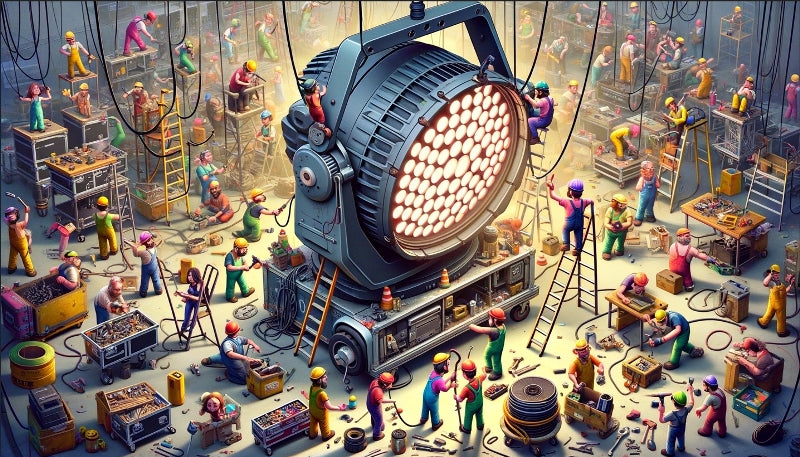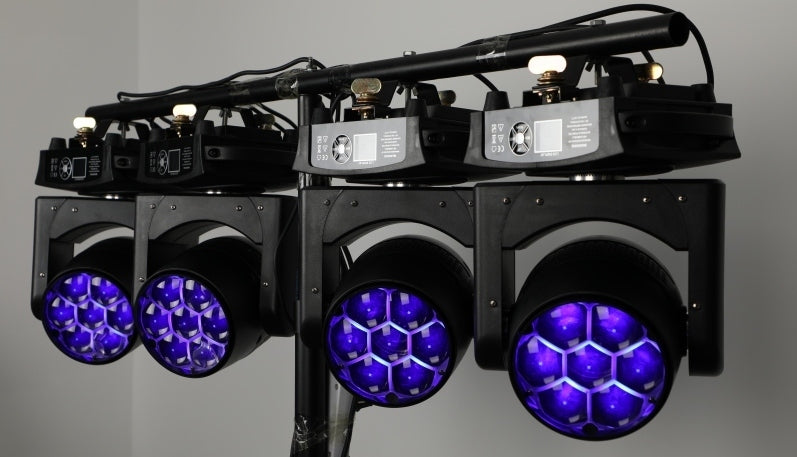The Art Of Crafting Stage Lighting

Designing stage lighting is more than just flipping switches; it's an art form that requires attention to detail and a nuanced understanding of lighting techniques. While hands-on experience is invaluable, a step-by-step guide on stage lighting essentials can provide a great starting point.
WHAT CONSTITUTES EFFECTIVE STAGE LIGHTING?
There aren't any strict rules or protocols that lighting designers need to follow when conceptualizing their lighting plans. Some may adhere to tried-and-true methods, while others might opt for a more experimental approach to achieve remarkable results.
The common objectives to bear in mind include:
- Ensuring consistent and uniform lighting across the stage
- Setting lights at practical angles
But again, these objectives are open to interpretation. Designers often bend or break traditional norms to develop lighting that is tailored to the unique needs of a specific show.
UNDERSTANDING THE PRINCIPLES OF STAGE LIGHTING
A well-thought-out lighting plan serves multiple purposes, each meticulously planned. During the setup, you should assess the function and impact of each light source.
Proactive vs. Reactive Stage Lighting
The absence of formal guidelines can make lighting design a daunting task for newcomers. However, there are proactive and reactive lighting strategies to aid the process.
Proactive strategies are those where specific lighting features are intentionally used to produce a desired effect—such as spotlighting the protagonist in a pivotal scene.
In contrast, reactive lighting strategies involve identifying what won’t work for your objectives, thereby narrowing down your options to find the most suitable techniques.
MASTERING THE BASICS OF STAGE LIGHTING
When building your stage performance, understanding the fundamentals of lighting design can transform your visuals from ordinary to extraordinary. Each step is vital to achieving a lighting setup that complements every aspect of your performance.
- 1. Analyze the Script
Begin by reading the script to identify the lighting elements that will help express the narrative. Your notes at this stage should be general ideas, like “forest lighting” for scenes set in a forest.
- Compile the Cue Sheet
Once you have a preliminary idea of the lighting needs, create a cue sheet outlining the lighting transitions throughout the show. This is essential for coordinating with other departments like the director, actors, and set crews.
- Draft the Lighting Scheme
Here, start narrowing down your ideas into a comprehensive plan. Experiment with various lighting types to find the setup that best suits your production needs.
- Types of Fixtures
- PAR Lights: Versatile and widely-used, offering a range of beam angles.
- Followspot: Ideal for tracking individual actors.
- Fresnels: Great for soft-edge lighting.
- LED Strips: Excellent for creating mood lighting or wall washes.
- Placement and Rigging
Select the most effective areas to place your lighting fixtures. Experiment with different configurations to achieve your desired effects, from front lighting to back and downlighting.
- Focusing the Lights
Depending on the script and lighting plan, you may opt for sharper or softer focus to guide the audience’s attention.
- Narrative Through Lighting
Lighting can help express the story’s mood, time shifts, and significant moments, from shifting hues to simulate the time of day to spotlighting crucial events.
- Rehearsal
Use this time to fine-tune your lighting, noting any required adjustments to your cue list.
- Refinements
Once you've rehearsed, make any necessary tweaks to ensure that your lighting fulfills its intended function.
After changing elements, you can use other rehearsals to check changes and ensure they are working the way you want them to. Returning to rehearsals will also help your staff and cast understand the differences and their effects.
By following these steps, not only will you create a successful stage lighting plan, but you will also ensure that the lighting complements the performance, providing the audience with a visual and emotional feast.







Leave a comment